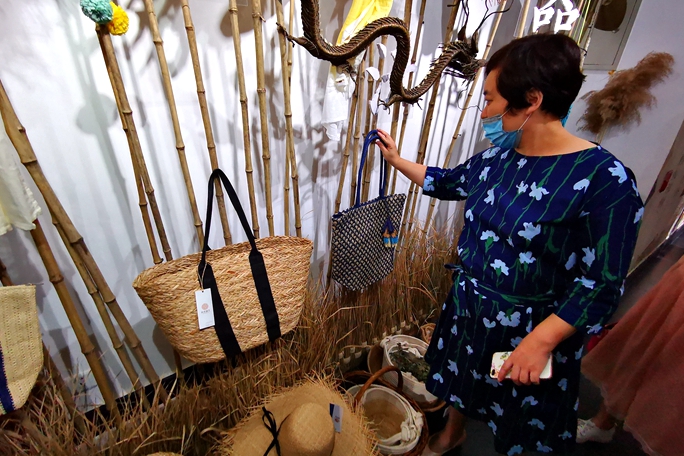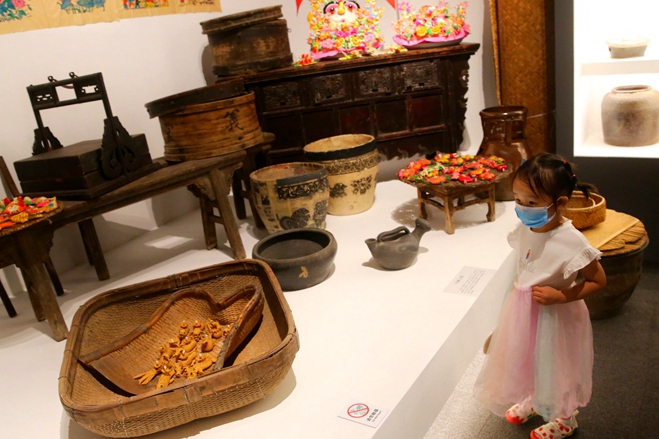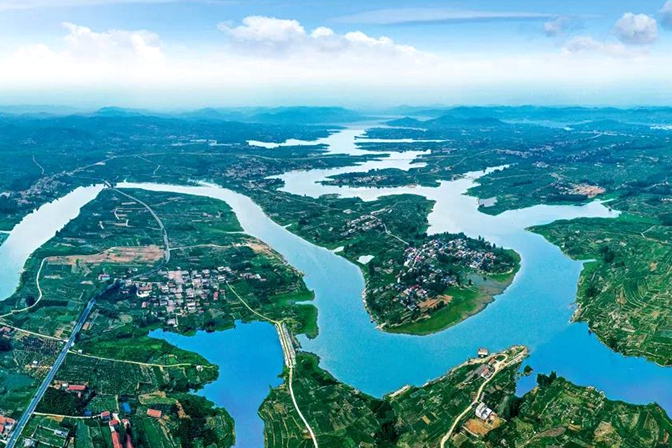Rongcheng, Home To Swans
The city sets a brilliant example of how people and swans can co-live in harmony, reports Ju Chuanjiang
In the deep of winter, Rongcheng, a coastal city in East China's Shandong province, provides a warm habitat for wild swans.
Driving along the coastline, flocks of swans can be seen in almost every bay. The biggest swan habitat is called Swan Lake where thousands of swans gather in shallow water looking for food, preening, flapping their wings and 'bickering' with friends and family. From time to time a few swans take to the sky, attracting photographers who are waiting onshore to snap them. It seems the swans here are not afraid of people and they wave their wings to show human beings their charm.
Swan Lake is a natural lagoon with an area of 4.8 square kilometers. The lake is surrounded by land on three sides, with a wide estuary in the southeast connected to the sea. The lake is rich in algae, with a kind of seaweed which swans like best. In addition, several streams around the lake provide fresh waters, providing a unique living environment for them.
Zhang Jian, director of the swan protection office at the Rongcheng forestry bureau, said for winter the swans begin flying to Rongcheng in November from the Siberian region, Inner Mongolia autonomous region and the Chinese northeastern regions. Swans will fly back north in March.
"Due to the continuous improvement of the environment, the number of swans here keeps increasing year by year. Nearly 10,000 swans will spend winter here this year while at the end of the 1990s, their numbers were less than 2,000," Zhang said.
Over the past ten years, in order to protect their habitat, the local government invested 130 million yuan ($19 million) in dredging the lake, restoring the seaweed ecological system, clearing the lake's channels and treating sewage. Now the lake is two meters deep, providing a better environment.
The swan protection office says it feeds the swans more than 200 kilograms of corn every day.
"Feeding can not only make up for the shortage of the wild swans 'food, but also enhance the affinity between wild swans and humans." Zhang said.
In the shelter for injured and sick swans, 58-year-old Wang Houli is busy feeding two ailing birds.
"The swans were sick when they arrived here due to diarrhea," Wang said.
"They are recovering and will be able to live in the lake in a couple of days."
Every year, the shelter's workers need to treat more than 10 swans that get injured during their flight or become sick due to diarrhea.
Originally wild swans were afraid of humans, but the Rongcheng swans are getting more and more relaxed with mankind.
A decade ago they preferred to keep 500 meters or so from the lake's banks, but now they come in as close as 10 meters from shores that are usually packed with tourists. Wang said that probably because of local residents'caring attitudes towards swans - people properly protect and feed them and look after their environment - things keep improving.
The swans continue to attract flocks of fascinated tourists to Rongcheng. Thanks to them, the city was given the status of a provincial tourism resort by Shandong provincial government in 1995 and in 1997 the place was listed as national scenic spot and a national nature reserve.
In the bay in front of Yandunjiao village, hundreds of swans float only a few meters away from tourists.
Yandunjiao, which has a history going back than 400 years, boasts seaweed-thatched houses with the walls made of thick stone or earthen blocks. The sea grass roofs covered by fishing nets present a visual mystery. White swans and the seaweed-thatched houses feature in the haunting scenery, like an oil painting.
This beautiful and small place now only has 530 households. But the swans have made the working fishing village also a tourism village and the brisk tourism has changed the fishermen's way of life. More than 50 families in the village provide accommodation services for the visitors.
Photographers from home and abroad flock here every year. In addition to appreciating the swans, tourists can taste local food, such as crab, fried shrimp, fish and Jiaodong bobo, a kind of steamed bun.
Yandunjiao village attracts 100,000 visitors every year, who generate revenue of nearly 10 million yuan. Every day, hundreds of professional photographers from home and abroad arrive to take photos of the swans. To catch these beautiful moments, some stay for a week or more.
The guest rooms, living rooms and dining rooms of the family hotels in Yandunjiao village are decorated with photos of the birds. Many of them, and pictures of the seaweed homes, have won international awards.
Wang Xinyu, a young man, has come here for four years in a row to take photos of the swans.
"Swans are birds that attract good luck. I like listening to their sounds and seeing them dance," Wang said.
The swan lake has become a research base for wild swans. Universities including Shandong University, Yantai University, China Academy of Sciences and Shandong Normal University, have set up facilities here.
The local swan protection office and the Chinese Academy of Sciences installed satellite positioning equipment on more than 20 swans last March and in January this year to track their migration patterns and habits. Teachers and students from Shandong University stay here for years to observe their numbers, conditions, as well as the tourists' influence on the living habits of the birds.
"Swans and human beings are living closer and closer, indicating that wild swans can live in harmony with man, but overfeeding will weaken their ability to survive in the wild," said Liu Jian, a teacher from Shandong University.
Swans like living in groups. They fly to the sea to look for food and then fly to rivers to drink fresh water.
If swans want to be airborne, they nod or toss their heads to decide whether to take off. Little swans that are not willing to fly will be pecked by the larger birds.
In the morning, swans repeatedly clean and comb their feathers in the shallow water area. When families of swams fight for food, those involved wave their wings and make loud sounds, chasing and biting each other.
Swans are graceful and perch in beaches, lakes, reservoirs and wetlands. Adult swans can weigh over 7 kilograms. When they open their wings, the length can measure more than 1.5 meters and they can fly as high as 8000 meters.
Qu Rongheng, 62, of Yandunjiao village, said swans started coming here 40 years ago, but it was not until the year 2000 that a large number of swans gathered there.
"The swans have made our village more and more of a bustling place to be," he said.


 Shandong Culture and Tourism Consumption Season
Shandong Culture and Tourism Consumption Season Culture, tourism sectors pick up in Shandong as epidemic wanes
Culture, tourism sectors pick up in Shandong as epidemic wanes

